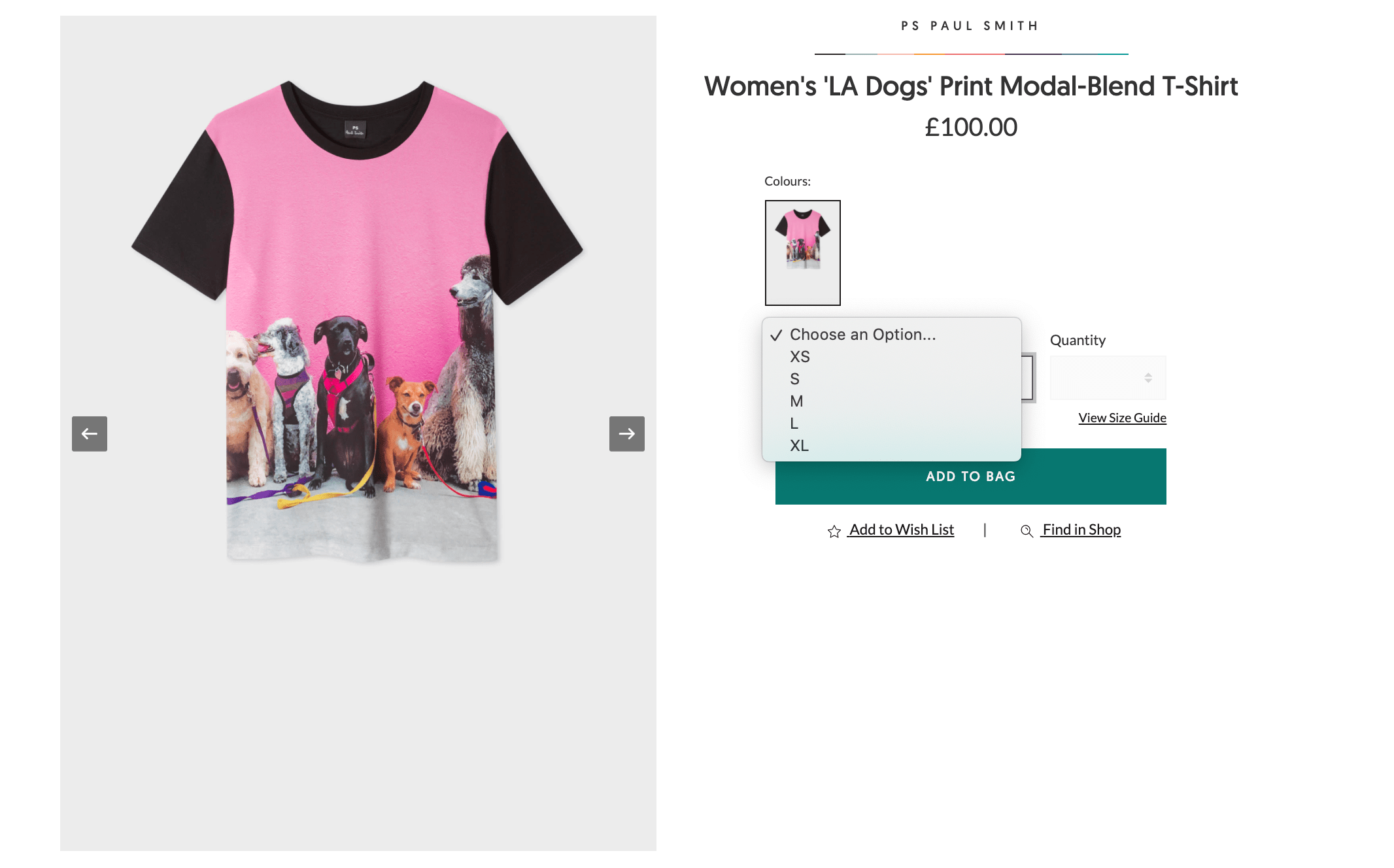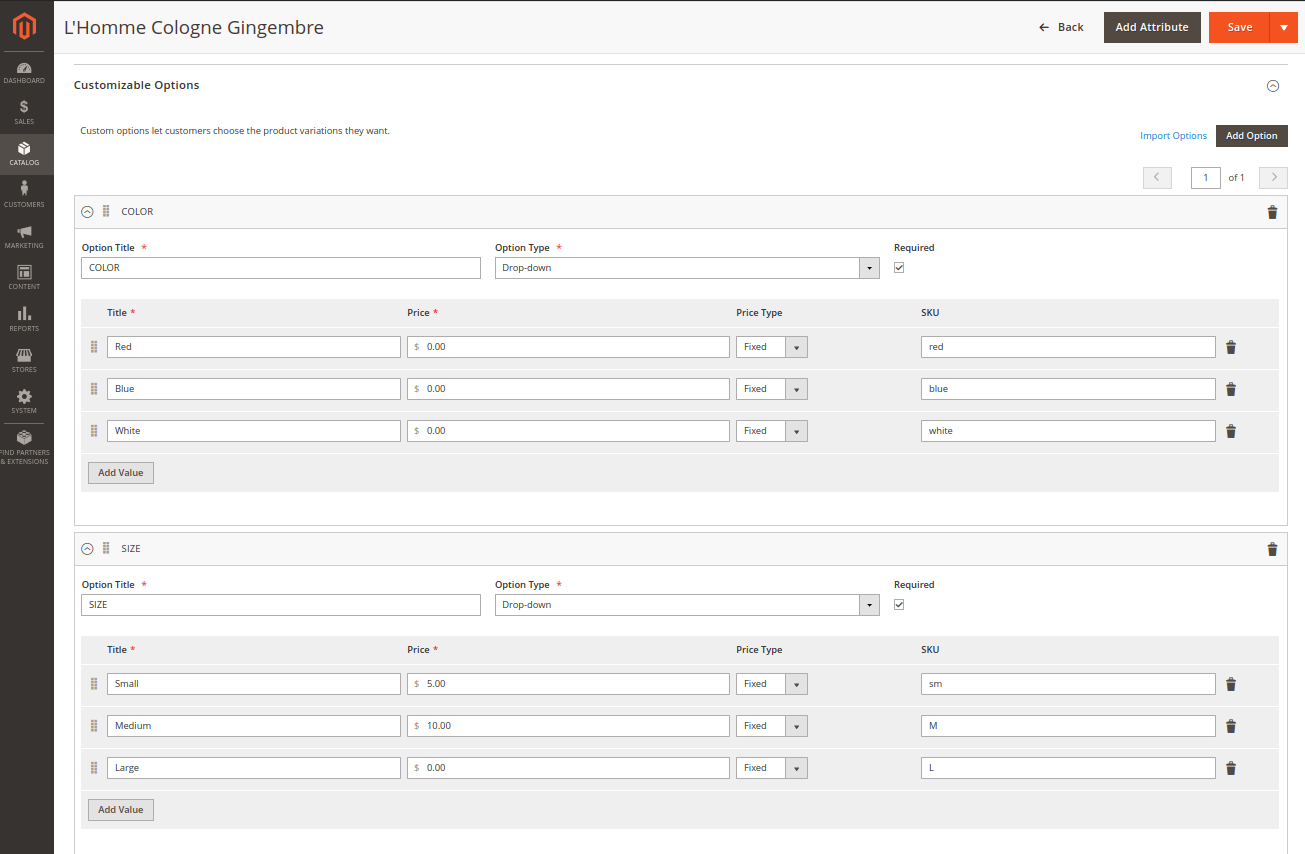This time we will focus solely on the advantages and disadvantages of configurable products and simple products with custom options in Magento.
Some times ago we estimated a project for migrating products from CubeCart to Magento. The client had his products in CubeCart set up as simple products with custom options, and before we got into the technical details we decided to suggest him importing the products into Magento as configurable products with their respective simple product variants. We had covered the product types of Magento once, and this time we will focus solely on the advantages and disadvantages of configurable products and simple products with custom options because it looks like people often confuse them or simply don’t completely understand the difference.
Introduction to Product Types
First, a short introduction in case you don’t feel like reading the article about the product types in Magento. If you have a product “Supercool shoes” in many different sizes, you can set it up as a simple product with custom options for each size. Alternatively, you can create several simple products like “Supercool shoes Size 1”, “Supercool shoes Size 2”, “Supercool shoes Size 3” and combine them into one configurable product “Supercool shoes”.
In the front-end both configurations look relatively the same:


One of the examples is a simple product with custom options and the other one is a configurable product — you will never tell which is which until you have checked the setup in the admin backend or inspected the code and found some specific indicators.
Simple Products Setup
While the front-end appearance is more or less the same, the backend setup is completely different. Let’s start with simple products because they are.. simple.
Magento allows to create as many custom options as you want, be it size, color, gender, you name it. Each custom option can have its own SKU name (optional) that will be attached to the SKU of the product, for example, shirt-style1-S, shirt-style1-M, etc. You can also add extra cost to every option if you want. In the backend custom option configuration looks like this:

This is more or less everything you need to know about custom options. There are some extensions that allow more to be done with custom options, but the main idea is still the same.
Configurable Products Setup
Configurable products are quite a level up. Truth be told, they are much more difficult to manage in the backend. If you have a dress that comes in blue, yellow, red color, and in small, medium, large sizes you will have to create all the 9 combinations: dress-blue-S, dress-blue-M, dress-blue-L, dress-yellow-S, dress-yellow-M and so on. Then you create a master product that will unite all the 9 simple products — it will be our configurable product. In the backend it looks something like this:

When creating/editing product configurations, you can specify the price in case it’s different for every product variant, apply unique images, quantity.
As you can see the amount of time you will need to invest into product creation is huge. There are a few extensions that can help you do it faster, like Configurable Products Pro by Aitoc — you create a configurable product, specify the attributes and the extension will automatically create all product combinations. And we are working on the extension that automatically assigns simple products to the respective configurables in case you have your simple products already created or migrated from another cart.
Clearly, configurable product management might bring you much more pain compared to simple products, but the advantages of using the configurables are totally worth it. It’s a much more SEO-friendly approach, all your simple products will be accounted for by the search engine of the store, and they will be included in the layered navigation (filters) if you decide so (it’s easily managed when you create attributes). Moreover, when you have one simple product with custom options you won’t be able to manage the inventory for every variant. With configurable products whenever some simple product variant becomes out of stock — the user won’t see that variant in the front-end, or they can still see it but won’t be able to add it to cart.
In addition, if you have a configurable product you can sell every simple product variant individually, which is not possible with a simple product with custom options.
Configurable Products vs. Simple Products Comparison
Here’s a comparison table of configurable products vs simple products with custom options to make it easier to understand the differences:
- Feature - Simple product with custom options - Configurable product with associated simple products
- Inventory - Not managed - Managed
- Pricing - Managed -Managed
- Filters and search -Not included in filters and search - Included in filters and search
- Setup - One product - Many products, one per combination
- SEO - Not SEO-friendly - SEO-friendly
- Good for... - mall amounts of products with few variants - Big amount of products with many variants
- Ease of use - Easy - Requires much time and effort
Depending on the type of your business using custom options might make more sense, for example if you sell products made to order and they don’t come with predefined parameters. Now when you know the difference it should be easier for you to decide on the best way to setup the products. Stay tuned!




